5 tips for creating and using an organization chart
An organization chart is not rocket science. With just a few tips and tricks, you will have your organization structure on your screen in no time. We have summarized the most important points for you.
1. Relevance
The key to any organization chart is current information. The fast pace in companies today is presenting a challenge: new positions, new employees, restructuring initiatives – there are plenty of scenarios where the organization chart has to be adapted.
Making the organization chart available online for all employees or certain ones can be a huge advantage. A SaaS application is quickly ready for use and cost-effective. It is important that data security is guaranteed.
Another key aspect, of course, is data maintenance. You are responsible for the quality and relevance of your data. The SaaS application automatically visualizes the data in an organization chart. All you need is a well-maintained Excel list. It is automatically read out by the software and converted into organization chart format. Plan B? You enter the information in the application yourself. First make sure that the software is intuitive. Videos that show how to handle the software can be useful.
2. Search
How does even the most fantastic organization chart help, if you cannot find certain pieces of information? You are looking for the telephone number of a particular employee, for example, but do not know which department they work in. Or: You know only the last name of an employee, but still want to find them quickly in the organization chart. It is important that the organization chart software has a flexible search function. This means being able to search for all information that has been created or imported.
3. Restructuring
Today’s daily business routines are shaped by constant change. An employee simply moves department or location, and the organization chart has to be adapted. Make sure your software allows you to respond to changes quickly and simply. It is easier to move positions, employees and departments in the organization chart via Drag&Drop than to delete and recreate every single box by hand.
4. Recruiting
The organization chart supports your recruiting process. You can depict which positions are currently vacant and which departments are experiencing bottlenecks. Ideally, use colors to emphasize this information so that it catches the eye straightaway. A fast response is required here, after all!
5. Team
Everyone is talking about employer branding, team building and employee loyalty. Has it ever occurred to you that your organization chart can play a role here too? In the organization chart, you can depict your teams with all employees, job titles and affiliations. Every employee can see where they fit within the company, to which team they belong and which position they hold – all this information is online and can be retrieved at anytime… Another way to strengthen the feeling of belonging and togetherness.



